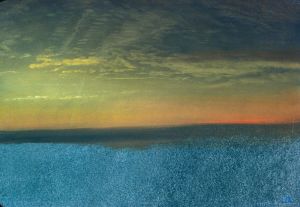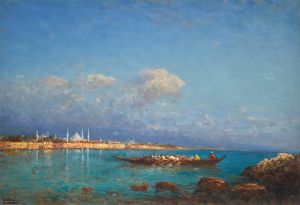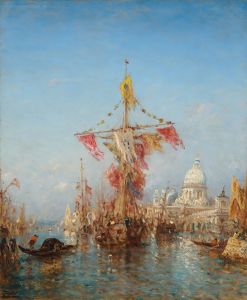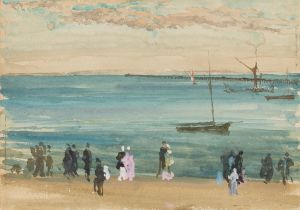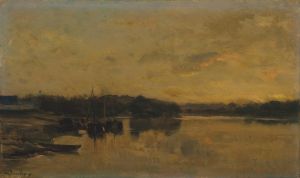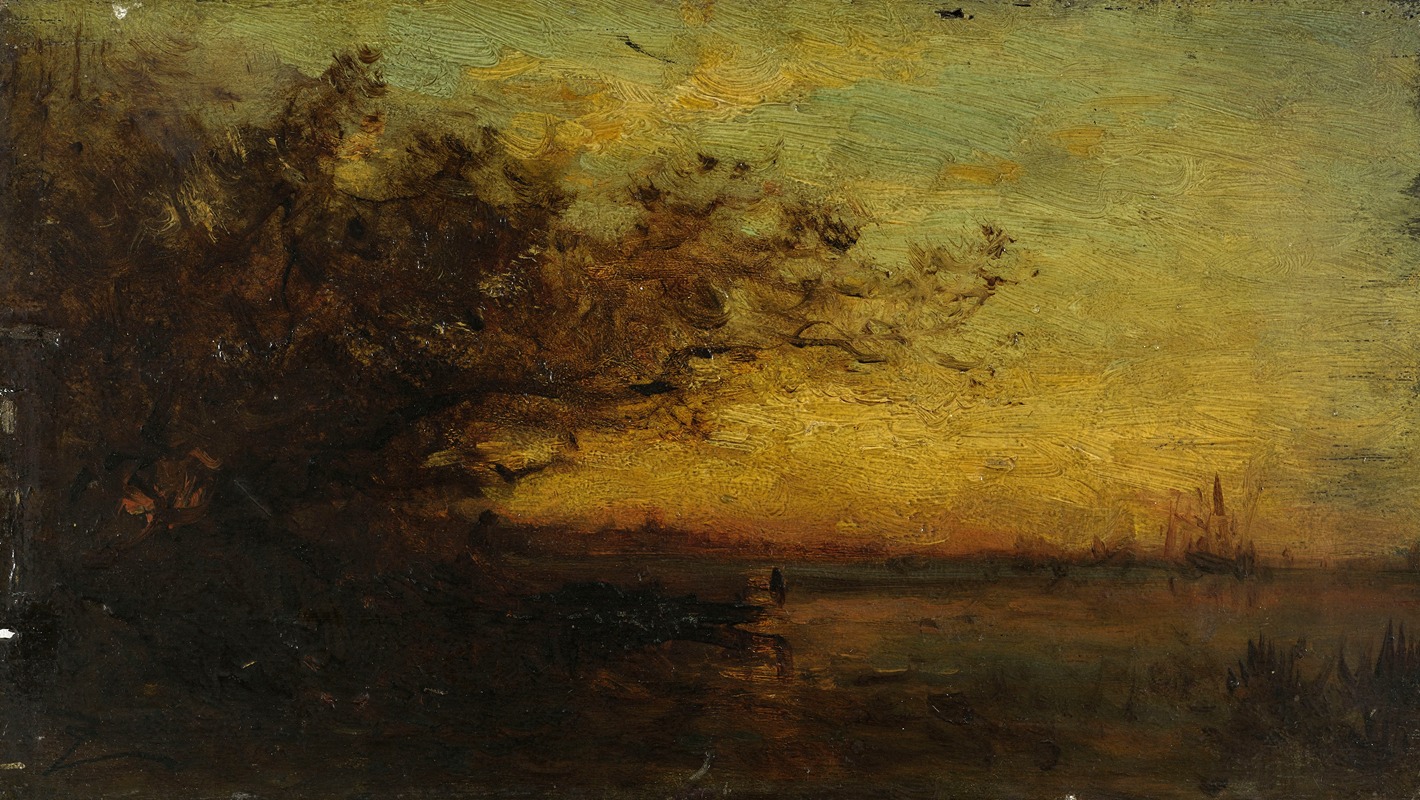
Plan d’eau, soleil couchant. Au revers; Deux études
A hand-painted replica of Félix Ziem’s masterpiece Plan d’eau, soleil couchant. Au revers; Deux études, meticulously crafted by professional artists to capture the true essence of the original. Each piece is created with museum-quality canvas and rare mineral pigments, carefully painted by experienced artists with delicate brushstrokes and rich, layered colors to perfectly recreate the texture of the original artwork. Unlike machine-printed reproductions, this hand-painted version brings the painting to life, infused with the artist’s emotions and skill in every stroke. Whether for personal collection or home decoration, it instantly elevates the artistic atmosphere of any space.
Félix Ziem was a French painter known for his vibrant landscapes and cityscapes, often capturing the beauty of Venice and the Mediterranean. Born on February 26, 1821, in Beaune, France, Ziem initially studied architecture before turning to painting. He became associated with the Barbizon School, a group of painters who were part of the Realist movement in France, although his style was more aligned with Romanticism due to his use of vivid colors and dramatic compositions.
"Plan d’eau, soleil couchant. Au revers; Deux études" is a work by Félix Ziem that reflects his fascination with light and water, common themes in his oeuvre. The title translates to "Body of Water, Sunset. On the reverse; Two Studies," indicating that the piece likely features a sunset scene over a body of water, with additional studies on the reverse side. This dual composition suggests Ziem's practice of exploring different perspectives and techniques within a single work, a method he often employed to capture the transient effects of light and atmosphere.
Ziem's works are characterized by their loose brushwork and vibrant palette, capturing the ephemeral qualities of natural light. His ability to convey the shimmering effects of water and the glow of the setting sun would have been evident in "Plan d’eau, soleil couchant," aligning with his reputation for creating atmospheric landscapes that evoke a sense of place and moment.
Throughout his career, Ziem traveled extensively, drawing inspiration from various locales. His journeys to Venice, Constantinople, and North Africa significantly influenced his artistic output, providing him with a wealth of subjects and scenes to depict. These travels enriched his understanding of light and color, elements that are crucial in his sunset and water scenes.
Ziem's contribution to art was recognized during his lifetime, and he enjoyed considerable success. He exhibited regularly at the Paris Salon, and his works were acquired by collectors across Europe. In 1857, he was awarded the prestigious Legion of Honor, a testament to his impact on the art world.
The reverse side of the painting, "Deux études," suggests that Ziem used this canvas to experiment with different ideas or compositions. This practice was not uncommon among artists, who often used available surfaces to test their techniques or develop new concepts. These studies could provide insight into Ziem's creative process, revealing his approach to composition and his exploration of light and form.
Félix Ziem passed away on November 10, 1911, in Paris, leaving behind a legacy of works that continue to be celebrated for their vibrant depiction of natural and urban landscapes. His paintings are held in numerous public and private collections, including the Musée du Louvre in Paris and the Hermitage Museum in Saint Petersburg, ensuring that his artistic vision endures.
"Plan d’eau, soleil couchant. Au revers; Deux études" exemplifies Ziem's mastery in capturing the interplay of light and water, a theme that resonates throughout his body of work. While specific details about this particular painting may be limited, it undoubtedly reflects the qualities that define Ziem's celebrated style.







